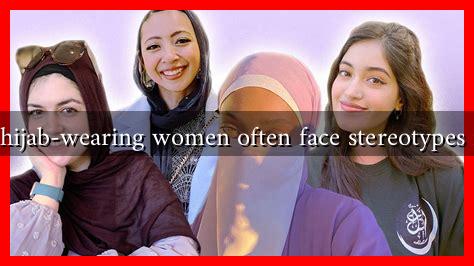-
Table of Contents
Why Do Hijab-Wearing Women Often Face Stereotypes in Media?
The hijab, a traditional headscarf worn by many Muslim women, has become a symbol of both faith and identity. However, hijab-wearing women frequently encounter stereotypes in media representations that can perpetuate misunderstanding and bias. This article explores the reasons behind these stereotypes, their implications, and the need for more nuanced portrayals in media.
The Roots of Stereotyping
Stereotypes surrounding hijab-wearing women often stem from a combination of cultural misunderstandings, historical contexts, and media portrayals. Here are some key factors contributing to these stereotypes:
- Lack of Representation: Many media outlets fail to include diverse voices and perspectives from the Muslim community, leading to a narrow portrayal of hijab-wearing women.
- Historical Context: The portrayal of Muslims in media has often been influenced by geopolitical events, particularly post-9/11, which has led to a skewed perception of Muslim women as oppressed or submissive.
- Generalization: Media often generalizes the experiences of hijab-wearing women, ignoring the diversity within the Muslim community regarding culture, beliefs, and personal choices.
Media Portrayals and Their Impact
The way hijab-wearing women are depicted in films, television shows, and news media can have significant consequences. These portrayals often fall into a few common stereotypes:
- The Oppressed Victim: Many narratives depict hijab-wearing women as victims of their circumstances, reinforcing the idea that they are forced to wear the hijab against their will.
- The Terrorist Associate: In some action films and news reports, hijab-wearing women are often linked to terrorism, perpetuating fear and suspicion.
- The Exotic Other: Some media portrayals fetishize hijab-wearing women, reducing them to mere symbols of exoticism rather than fully realized characters with their own stories.
These stereotypes can lead to real-world consequences, including discrimination, social isolation, and mental health issues for hijab-wearing women. A study by the Institute for Social Policy and Understanding found that 67% of Muslim women reported experiencing discrimination, with many attributing it to their hijab.
Case Studies: The Power of Representation
There are notable examples of media that have successfully challenged stereotypes and provided more accurate representations of hijab-wearing women:
- “Ramy” (Hulu): This series features a Muslim-American protagonist navigating life, love, and faith, showcasing the complexities of being a hijab-wearing woman in contemporary society.
- “The Muslimah Who Wears a Hijab” (YouTube): This documentary series highlights the stories of various hijab-wearing women, emphasizing their individuality and personal choices.
- “Ms. Marvel” (Disney+): The character Kamala Khan, a Pakistani-American superhero, wears a hijab and is portrayed as a relatable, multi-dimensional character, breaking away from traditional stereotypes.
These examples illustrate the importance of authentic storytelling and representation in media, which can help dismantle harmful stereotypes and foster understanding.
Moving Towards Change
To combat the stereotypes faced by hijab-wearing women in media, several steps can be taken:
- Increased Representation: Media creators should strive for more diverse and accurate portrayals of hijab-wearing women, including their varied experiences and backgrounds.
- Engagement with the Community: Collaborating with Muslim women in the creative process can lead to more authentic narratives that reflect their realities.
- Education and Awareness: Media literacy programs can help audiences critically engage with media representations and challenge stereotypes.
Conclusion
The stereotypes faced by hijab-wearing women in media are deeply rooted in cultural misunderstandings and historical contexts. These portrayals can have significant implications for the lives of these women, leading to discrimination and social isolation. However, through increased representation, community engagement, and education, the media can play a crucial role in dismantling these stereotypes. By showcasing the diverse experiences of hijab-wearing women, we can foster a more inclusive and understanding society.
For further reading on the impact of media representation, you can explore resources from the Institute for Social Policy and Understanding.


